Running a help desk can prove expensive. You need to have someone available to man it, you need to get the software, and have a server to run it on. But this is where web-based help desks come in.
Here is our list of the best web-based help desks:
- ManageEngine ServiceDesk Plus EDITOR’S CHOICE A set of IT service management tools that includes Help Desk management utilities. Installs on Windows Server and Linux and is also available as a cloud service. Start a 30-day free trial.
- Zendesk (FREE TRIAL) A very popular web help desk system that uses a knowledge-base as a front end to filter out support calls. Start a 14-day free trial.
- Atera Helpdesk Software (FREE TRIAL) Software support for managed service providers (MSPs) that includes a self-service portal for users, a ticketing system, and team activity tracking. Start a free trial.
- SolarWinds Service Desk A cloud-based help desk platform that also has change management and system monitoring facilities. The service implements ITIL processes through checklists and workflows.
- Spiceworks Cloud Help Desk A free, ad-supported help desk system.
- Zoho Desk A help ticketing system with chat facility, forum framework, and knowledgebase platform.
- Freshdesk A team management system with ticketing, chat channels, forums, and knowledgebase facilities.
Fortunately, web-based help desk software makes support service provision affordable. The ease of starting up with a cloud-based help desk system makes this option very popular with startups and small businesses.
The fact that there are very low upfront costs because of the subscription pricing model used by these services also makes online platforms very appealing to businesses with little money to spare.
The best web-based help desks
Help desk systems delivered on the Software-as-a-Service (SaaS) model charge by subscription on a per-agent basis.
That means a single operator gets access to just as much functionality as a big corporate support team. Web help desks really level the playing field. They cut out the need to waste time maintaining even more software and let you get on with supporting your users and customers.
We have a list of great web help desk software that will really assist you to serve your users better. Not only do they include ticketing and note-taking systems, but also chat interfaces, self-service portals and knowledgebase platforms.
Our methodology for selecting the best web-based help desks
We’ve broken down our analysis for you based on these key criteria:
- User Interface and Usability: The tool must be intuitive and easy to navigate, ensuring a smooth user experience for both support agents and end-users.
- Feature Set: The help desk should offer a comprehensive range of features, including ticketing systems, self-service portals, and SLA tracking.
- Scalability and Flexibility: The platform should be able to scale with the business needs, offering customizable options to fit different company sizes and requirements.
- Integration Capabilities: The help desk should seamlessly integrate with other essential business tools and software to enhance overall productivity.
- Cost-Effectiveness: The pricing structure should provide good value for money, offering a range of plans to cater to different budgets and needs.
1. ManageEngine ServiceDesk Plus (FREE TRIAL)
This ITIL-based ITSM package from ManageEngine includes a full help desk system as well as offering a range of IT asset management tools. The ServiceDesk Plus system is available in three editions.
Key Features:
- Self-Service Portal: Provides a knowledge base and various methods for users to contact support.
- Automatic Ticket Queueing: Automates the organization and assignment of support tickets.
- Team Management Functions: Includes features for managing and tracking the performance of support teams.
- Comprehensive ITIL Framework: Integrates ITIL-based workflows for efficient system and project management.
- Flexible Deployment Options: Available as both SaaS and on-premises installations.
Why do we recommend it?
ManageEngine ServiceDesk Plus is a very similar package to SolarWinds Service Desk. This system was built along ITIL lines and takes care of system development projects as well as firefighting. The Help Desk functions include a user self-service portal, a knowledge base, and a ticketing system.
The Standard edition includes the Help Desk software of ManageEngine. The other two editions for this system have more features. The Professional bundle adds asset management features while also including the Help Desk system. The Enterprise edition of ServiceDesk Plus includes incident management, asset management, problem management, change management, release management, and IT project management as well as help desk and asset management software.
The help desk system of ServiceDesk Plus includes a knowledge base template to encourage self-help by users and offers a range of methods for users to contact the help desk. These include a mail system and a web-based self-service interface as well as a phone-based system that enables the users to raise new tickets.
The ServiceDesk Plus package enables the automatic allocation of tasks and allows the performance of technicians to be tracked. The management of help desk staff includes task sharing, task transfers, and specialist queues. Departments that are bound by an SLA are able to track compliance through the Service Desk Plus system.
The help desk environment provides workspaces for individual technicians and also for the team manager. The system ensures that users get notified automatically on the receipt of their queries and that no help task can be ignored. Reporting features in the tool enable team managers to watch targets and present performance assessments to higher management.
Who is it recommended for?
This package is probably a bit too complicated for small companies and there isn’t a free edition for the module. The bundle is aimed at large businesses that will need all of the functions in this package. The system is available as a SaaS platform or for installation on Windows Server or Linux.
Pros:
- Comprehensive Management Tool: Offers robust tools for managing client contracts, maintenance requests, and other services.
- Automatic Asset Discovery: Keeps NOC teams informed about network scope and new devices.
- Cross-Platform Support: Compatible with both Windows and Linux server distributions.
- Deployment Flexibility: Available for on-premises deployment and as a SaaS solution.
Cons:
- Complex Product Range: The extensive range of services and features may take time to fully explore and utilize.
ManageEngine ServiceDesk Plus is offered as on-premises software for installation on Windows Server and Linux and it is also available as a cloud service. All versions of the system are available for a 30-day free trial.
2. Zendesk (FREE TRIAL)
Zendesk is a very widely used help desk platform that is accessed online. The tool includes a chat facility to promote live communication between users and support staff. All contact, be it by chat, phone, or email, is logged into the ticketing system. The ticketing system generates an account with a tracking page for each user reporting a problem. The account page links on through to a knowledge base.
Key Features:
- Self-Service Portal: Provides users with a knowledge base to solve common issues independently.
- Ticketing System: Centralizes and tracks all user inquiries and support tickets.
- Manual Task Allocation: Allows managers to reroute and allocate tasks to specific experts.
- Live Chat Functionality: Includes a chat feature for real-time communication between users and support staff.
- Customizable Interface: Enables integration of corporate graphics and customization of service elements.
Why do we recommend it?
Zendesk is a successful online help desk system and it is going to appeal to companies that just need a help desk package and not a full service desk package. This service is called Zendesk for Services, but don’t read too much into that – it still isn’t a service desk package.
The interlinked knowledge base can be positioned before help desk access on the user journey in order to filter out calls to expertise in order to solve frequently encountered problems. The Zendesk platform also includes a self-service portal and an optional community forum. All of the elements in the package can be customized to integrate your corporate graphics and add, re-sequence, or exclude service elements according to your support strategy.
The ticketing system enables team managers to reroute problems towards topic experts and even allows for shared tasks to be recorded. The analytical and reporting features of the problem management system will help you identify system errors that should be closed down through infrastructure improvement, or frequent trivial problems that should be addressed by the knowledge base.
Who is it recommended for?
Zendesk has a huge market because its system is very easy to set up and easy to use. The system cuts down on the number of support staff that you need because it includes a user self-service portal where you can set up a knowledge base and filter out as many run-of-the-mill problems as possible.
Pros:
- User-Friendly Interface: Simple and intuitive design makes it easy to navigate.
- Centralized Management: Combines ticketing and chat into a single platform for efficient team collaboration.
- Effective Knowledge Base: Easy to set up, reducing the number of new tickets by addressing common issues.
Cons:
- Overwhelming Settings: The extensive options and settings may be daunting for smaller helpdesks.
Zendesk is accessible to businesses of all sizes because its subscription rate is levied per agent per month. This is a great option for startups because it doesn’t require any expensive upfront software or server purchases. You can get a 14-day free trial of Zendesk, so try out the higher of the two available packages, which is called the Enterprise edition.
3. Atera Helpdesk Software (FREE TRIAL)
Tested on: Cloud
Atera is a SaaS system that bundles together the remote monitoring and management (RMM) software needed by support staff and the professional services automation (PSA) systems used by the MSPs management. The PSA service includes a help desk management system.
Key Features:
- Comprehensive Team Management: Includes tools for managing entire tech support teams effectively.
- Efficient Work Scheduling: Simplifies scheduling tasks and managing workloads.
- SLA Compliance Tracking: Ensures tasks meet Service Level Agreement requirements automatically.
- Integrated Ticketing System: Features ticketing, self-service portals, and knowledge base templates for user support.
- Remote Monitoring and Management: Combines RMM software with PSA systems for seamless service provision.
Why do we recommend it?
The Atera Helpdesk Software is the secret weapon of the Atera package. This tool provides automated task routing and a console for each technician that lists all open tickets. There is also a manager console to track task completion and reroute, split, or merge tickets.
Atera Helpdesk Software is part of its PSA feature and includes a self-service portal that can be made available to the staff of the client company. This allows a knowledge base to be set up to guide users through the fault-free usage of the system. The portal can be white-labeled and it also gives access to a ticket raising screen.
The ticketing system operates as a teamwork scheduler and task tracker. Service managers can keep an eye on progress with SLA expectations automatically attached to each task, according to the contract with that client company. Team managers can split and merge tickets and also allocate tasks to multiple technicians.
All actions performed by each technician need to be channeled through the ticketing system. The Atera RMM also includes a system monitoring service, which raises alerts through the ticketing service. This ensures that no time spent at the client’s service goes un-billed. The RMM also includes other utilities that the technician needs to support the user community. This includes a remote access system and a remote desktop utility with chat functions to enable the support operative to communicate with the user while demonstrating a solution.
Who is it recommended for?
Atera is designed in two versions that cater to managed service providers and IT departments. Both iterations have four plans and all include the Help Desk service. All plans also include a user self-service portal and a knowledge base that can be integrated into that and used to provide scripts for support staff.
Pros:
- MSP-Oriented Design: Specifically built for Managed Service Providers and larger helpdesk teams.
- All-in-One Remote Management: Combines multiple remote management tools into a single solution.
- Cost-Effective Cloud Service: Available as a lightweight, cloud-based service, minimizing initial costs.
- User-Friendly Multi-Tenant Management: Simplifies management of multiple clients or departments with ease.
Cons:
- Steep Learning Curve: The extensive feature set may require time to fully explore and utilize all capabilities.
As an online service, Atera can be accessed from anywhere through any standard web browser. The system is charged for by subscription with a rate per technician per month. There are no minimum service requirements for a subscription, so it is easy to add and remove seats according to the business’s needs. You can get started with a free trial.
4. SolarWinds Service Desk
Tested on: Windows Environment
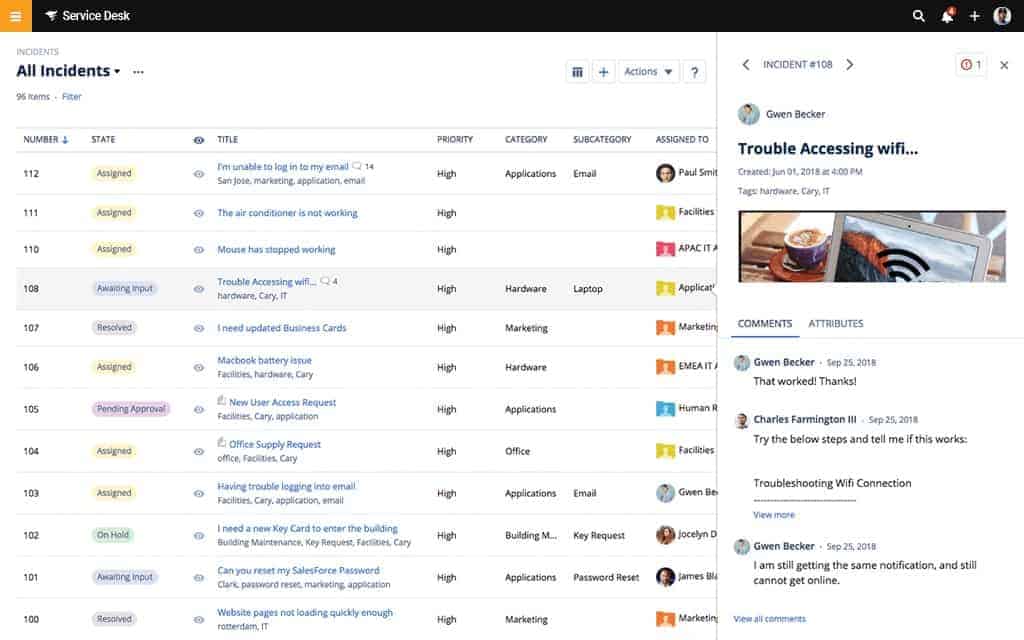
SolarWinds Service Desk goes beyond the requirements for a help desk system because it includes change management and system monitoring functions as well. The utility was designed to integrate ITIL processes, which are implemented as workflows and checklists.
Key Features:
- Knowledge Base Templates: Provides pre-built templates for creating a comprehensive knowledge base.
- Self-Service Portal: Enables users to solve common issues on their own.
- Robust Ticketing System: Manages and tracks support requests efficiently.
- ITIL Workflows: Integrates ITIL-compliant workflows for streamlined operations.
- Tech Team Management: Facilitates effective management of technical support teams.
Why do we recommend it?
SolarWinds Service Desk is an ITIL-compliant system. This system will help you with change management, problem management, incident management, and IT asset management. The package includes a ticketing system, which can be used to channel alerts from automated monitoring systems as well as queries from users.
The service is charged for on a per agent/per device basis, so it is suitable for organizations of all sizes – the sole trader gets exactly the same list of features as the corporate IT support team.
If you just need help desk software, the cheapest of the three service desk packages would suit you. The main elements of this module are a ticketing system, a self-service portal, and a knowledge base framework.
The ticketing system of service desk enables team managers to track the performance of individual agents and assess average problem processing times. The reporting and analysis module of the package gives you SLA goal achievement statistics and spots recurring problems. With the frequency of problems documented you can decide to update the knowledge-base guides to avert users from making the same mistakes again or identify system shortfalls than need to be rectified.
Service Desk goes further than just logging support requests to implement a full, ITIL-based resource management service. The software package is delivered as a service from the cloud, which cuts out the need to install, host, and maintain it, leaving your IT department with more time to improve services and support users
Who is it recommended for?
This is a good package for a large organization that operates the Service Desk model. The system is able to track complicated issues and decisions over whether they need to be fixed or a whole system section needs to be rewritten or replaced. The ticketing system provides user communication and team management functions as well as task management.
Pros:
- User-Friendly Interface: Simple layout ensures easy management even for large-scale operations.
- On-Premises and Cloud Options: Suitable for established and expanding help desks with both deployment options.
- SLA Tracking: Tracks time entries and SLA performance to ensure service quality.
- Proactive Alerts: Notifies staff proactively when SLAs are at risk of being breached.
Cons:
- Complexity: The detailed platform may require time to fully explore and master.
- Higher Plan Features: Advanced features like change and project management are only available in higher-tier plans.
Higher plans include change management and project management features that will enable you to evolve your IT system to improve performance and eradicate consistent faults. These processes are all built following ITIL guidelines. The highest plan is called Professional and you can get a 14-day free trial of this plan. After the trial period, you can switch down to one of the cheaper packages if you don’t need all of the features of the Professional deal.
5. Spiceworks Cloud Help Desk
Spiceworks produces a range of IT support software including network monitoring systems and a help desk platform. The Spiceworks Help Desk system is available online, where it is called Spiceworks Cloud Help Desk.
Key Features:
- Ticketing System: Manages and tracks all support requests efficiently.
- Knowledge Base Platform: Provides a comprehensive platform for users to find solutions to common issues.
- Mobile App: Offers access to help desk functionalities on the go via Android and iOS apps.
- Free to Use: The service is completely free, with no paid versions or trial periods.
- Easy Access and Maintenance: Hosted online, allowing access from anywhere and eliminating the need for hardware or software maintenance.
Why do we recommend it?
Spiceworks Cloud Help Desk is a free package that is hosted on a website. So, the service is easy to access and use. Spiceworks has had some nice free tools in the past but the company is gradually reducing its list of packages. Help Desk is one of the few that are still available.
This is an excellent and feature-rich support system. The Cloud edition is not quite as comprehensive as the on-premises version. However, working with the online service has the advantages of giving you access from anywhere in the world on any device and you are saved the bother of having to maintain the software or buy in hardware to host it. Spiceworks produces apps for Android and iOS to make it easier for you to access your account from mobile devices.
An amazing feature of Spiceworks Cloud Help Desk is that it is completely free to use. This is not a trial period or a cut-down version – there is no paid version of the Help Desk utility. You even get support from the provider if you have difficulty getting the system to work for your circumstances. One drawback, however, is that the service is funded through advertising. If you can put up with the presence of an advert panel in the dashboard, then you will be very happy with the facilities of Spiceworks Cloud Help Desk.
The standard system includes a ticketing system and problem processing and forwarding workflows. The Help Desk system also offers a knowledge-base platform.
If you decide to switch to the on-premises version, you can install the Spiceworks Help Desk software on Windows. The installed version is customizable and can be expanded by plug-ins. Many business software producers create plug-ins for Spiceworks to enable their applications to integrate with the Help Desk system. Some users also produce their own customizations and make them available to others for free through the user community forum. These plug-ins make the Help Desk system very flexible. The cost savings created by Cloud Help Desk and the on-premises Spiceworks Help Desk are very appealing to startups and small businesses.
Who is it recommended for?
Small businesses will like this tool. The biggest attraction is that it is free and the second attribute that makes it a winner is that you don’t need to have any technician knowledge to set it up. It has a knowledge base that you can set up to inform your customers and users.
Pros:
- Completely Free: A cost-effective solution that is entirely free to use.
- Mobile Accessibility: The mobile app enhances functionality and convenience for support on the go.
- Flexible Deployment: Available both as a cloud service and an on-premises installation.
Cons:
- Ad-Supported: The service includes advertisements, which may be distracting for some users.
- Limited Scalability: Better suited for smaller help desks with simpler requirements.
6. Zoho Desk
Zoho Desk includes self-help tools and AI processes to reduce the amount of work that your human operators need to do in order to support your user community. An optional user forum is another facility that you can deploy in order to reduce demand on your professional support team.
Key Features:
- Chatbot Integration: Uses AI to handle common problems and reduce workload on human operators.
- Ticketing System: Manages and tracks support requests effectively.
- Work Scheduler: Organizes and prioritizes tasks for support agents.
- Customizable Self-Service Portal: Provides a branded or fully customized interface for user support.
- Collaborative Tools: Facilitates team communication and ticket sharing with chat functionality.
Why do we recommend it?
Zoho Desk is a contender for the online crown of Zendesk. The package has the classic ticketing system with a user self-service portal as a front end. That interface can be branded or fully customized and it also includes a chatbot to filter out regular problems.
The dashboard for each agent groups open tasks in time bands, which are defined by the team manager. This enables agents to switch between tickets of equal urgency and clearly understand deadlines. Problem resolution is guided by scripts, which ensure that operators don’t overlook important data gathering or system checking steps. Tickets can be shared and communication between team members collaborating on a solution is facilitated by a chat utility.
The online access and collaboration features in the tool mean that your team can be very widely distributed, or even home-based. Both the operator and manager dashboards can also be accessed from mobile devices running Android or iOS.
Management utilities include monitoring and analytical features. A number of team management procedures, such as the registering of team member availability and the allocation of tasks, can be automated.
Who is it recommended for?
This package has a price per seat and three plan levels, which makes it appealing to all types of companies. Zoho is fighting for space in the market against Zendesk and Freshdesk, which are the leaders of the sector. If you want an online help desk package, your choice will boil down to these three.
Pros:
- Easy Cloud Deployment: Cloud-based setup simplifies deployment without the need for on-premises onboarding.
- Automation Tools: Empowers technicians with automation scripts for efficient problem resolution.
- Remote Execution: Allows commands to be executed before establishing remote connections.
Cons:
- MSP Focus: More tailored for Managed Service Providers rather than smaller LAN networks.
- Short Trial Period: A longer trial period would be beneficial for thorough evaluation.
Zoho Desk integrates easily with other Zoho products, including Zoho CRM, Zoho Books, and Zoho Bug Tracker. The system is free to use if you only have three agents in your support team. There are two paid plans, with the higher package including more automation and reporting options. You can get a 15-day free trial of either of the paid plans.
7. Freshdesk
Freshdesk is part of a stable of sales and HR support software produced by Freshworks. This help desk platform is accessed online so you don’t need to install any software in order to use it. The platform is very strong on self-help channels, delivering FAQ pages, a knowledge-base, and user forums to enable your users to find solutions themselves before contacting the Help Desk.
Key Features:
- Self-Service Portal: Provides users with FAQ pages, a knowledge base, and user forums to find solutions independently.
- Ticketing System: Manages and tracks all user support requests efficiently.
- SLA Tracking: Monitors service level agreements to ensure timely issue resolution.
- Collaborative Ticket Resolution: Allows multiple specialists to work on the same ticket via Team Huddle.
- Agent Collision Detection: Prevents duplicate support calls by merging similar tickets.
Why do we recommend it?
Freshdesk is the number 2 in the online help desk category. The functions that this package offers are very similar to those offered by Zendesk, however, it is a lot cheaper – Zoho Desk is cheaper still. This package is available in four plans with the top edition including a chatbot.
You can deliver solutions to user problems by getting your support agents to provide answers through the forum. If users still need to get in touch, you can make email, phone, chat, and web form channels available for communication. Solutions can be provided by automated bots to further reduce the demand on your human agents.
Tickets can be resolved by a group of specialists through the Freshdesk Team Huddle platform. This is a chat facility that enables managers to allocate several technicians to the same ticket. Chats attached to a ticket are only accessible to allocated staff. An Agent Collision Detection system automatically roots out duplicated support calls and merges tickets. It is even possible to allocate tickets from separate users as a grouped ticket if the problems that they report seem similar.
Management utilities include SLA tracking and agent performance monitoring. Ticket allocation can be set automatically or performed manually. Performance reports can be scheduled to run periodically and can be sent out automatically to the management team by email.
Who is it recommended for?
Freshdesk has per-seat pricing, just like Zendesk and Zoho Desk. Freshdesk is going to appeal to small businesses more than its rivals because it offers a free plan for up to 10 seats. The closest the other two get to that deal is a cut-down ticketing system from Zoho, called Zoho Express for up to five users.
Pros:
- User-Friendly Interface: Offers one of the best interfaces for ITSM tools, making it easy to navigate.
- Reduces Inbound Tickets: The self-service portal helps minimize the number of incoming support requests.
- Easy Ticket Creation: Simple and intuitive ticket creation process is beneficial for new staff.
Cons:
- Short Trial Period: A longer trial period would be beneficial for a more thorough evaluation.
- Limited Free Plan: The free plan is limited to small teams, which may not suit larger organizations.
Freshdesk is charged for on a subscription system. There are five plan levels, with the lowest package, Sprout, being free to use even though there is no limit on the number of agents that you can add to the account. The four paid plans are all available on a 21-day free trial.
Choosing a web-based help desk system
Even businesses with big IT budgets are drawn to web-based help desks because the flexibility these systems deliver makes it very easy to expand support services at will and contract the number of agents in the future without risking overprovisioning software licenses. The accessibility of cloud-based help desk platforms adds another attraction to businesses that employ specialists from all over the world. The ability to provide the help desk dashboard to home-based agents also cuts out the cost of providing office space and utilities.
The logic of deploying web help desk software instead of on-premises systems is easy to see and it is likely that the demand for web-based service desk platforms will continue to increase.
Web-Based Help Desk FAQs
In what ways do help desks benefit from adding web-based support?
Web-based tools aren’t limited to operating on one network. Therefore, you can use the same Web-based system for all of your support staff wherever they are located. This gives you the opportunity to easily standardize Help Desk procedures on all sites.
What is Web-based ticketing system?
Web-based ticketing systems usually include a portal unit through which users can log queries and track their progress. Behind the scenes, the technical team gets its tasks registered, prioritized, routed, and distributed through the ticketing system. All contact with users is facilitated through the ticketing system.
What is the difference between CRM and helpdesk?
CRM stands for customer relationship management. This is a system that records all details about customers and the business’s contact with them. The Help Desk is the support team that solves the problems experienced by users and customers. Contact details in the CRM system inform the Help Desk staff of previous communications with a user that calls in and also detail which company that person works for and what products the business uses. Details of the Help Desk interaction will be stored in the CRM.



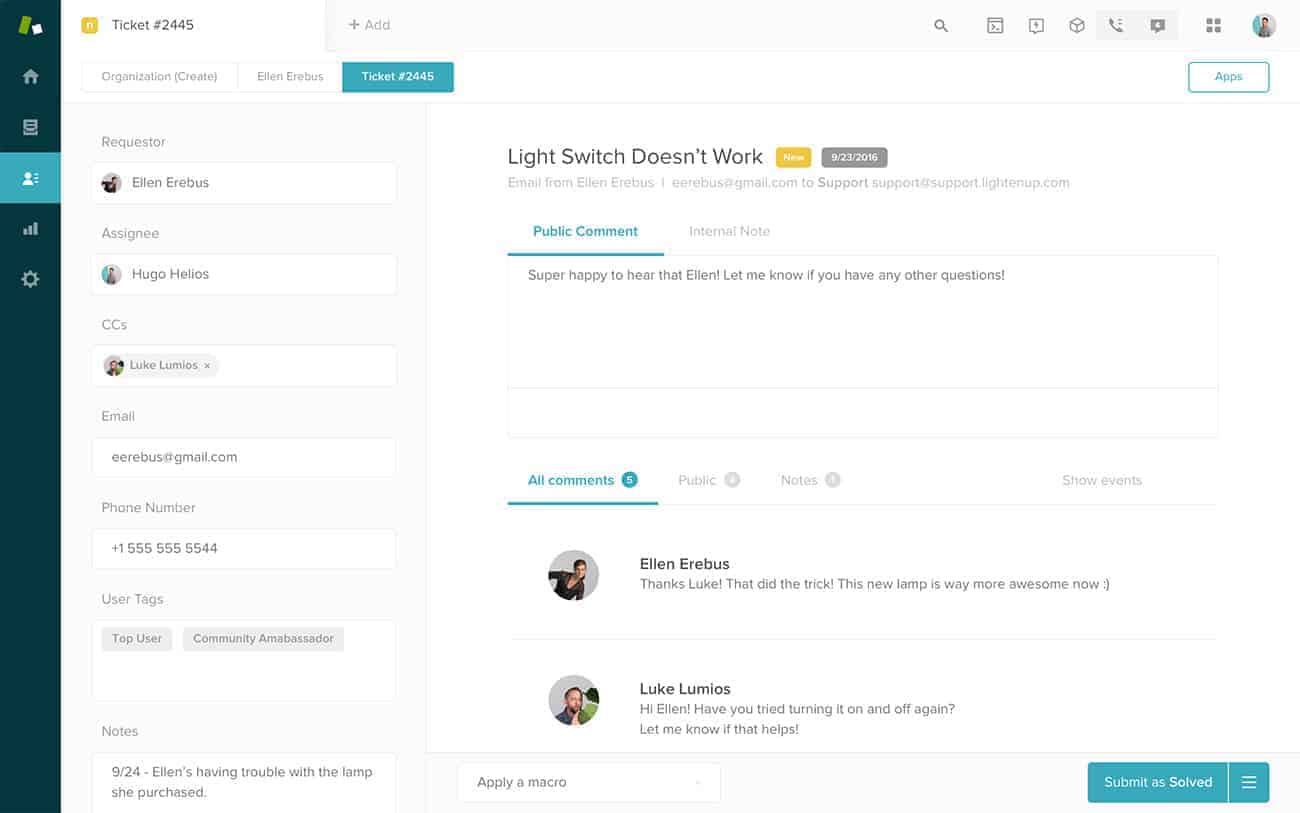

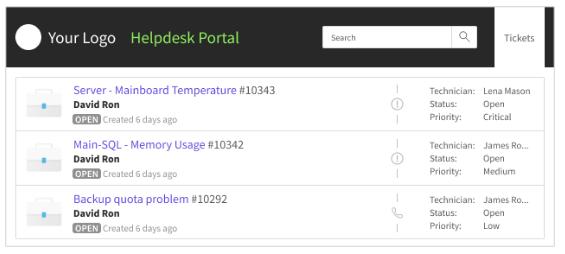
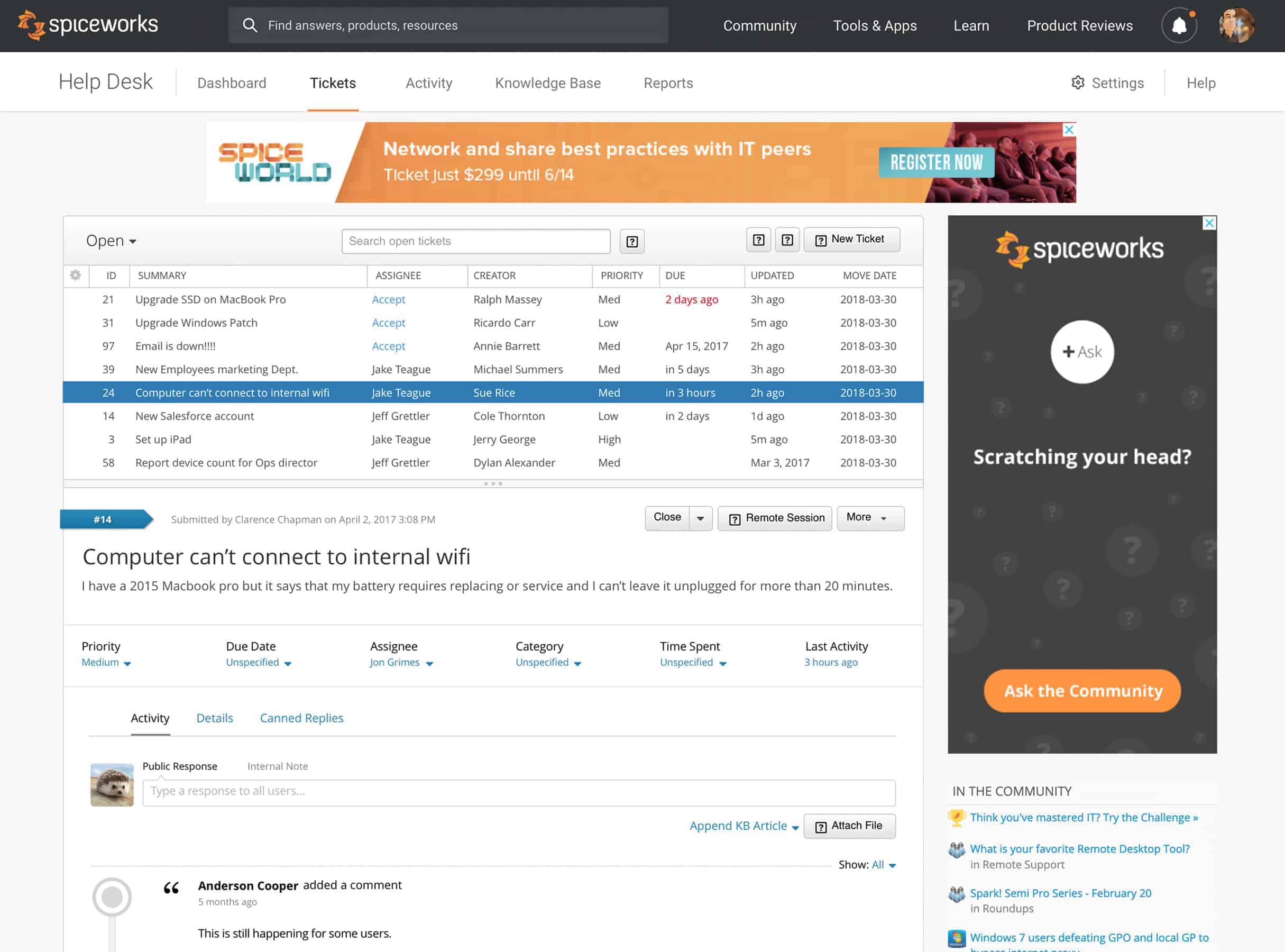
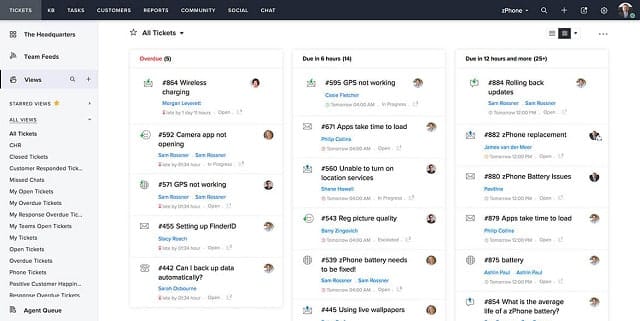
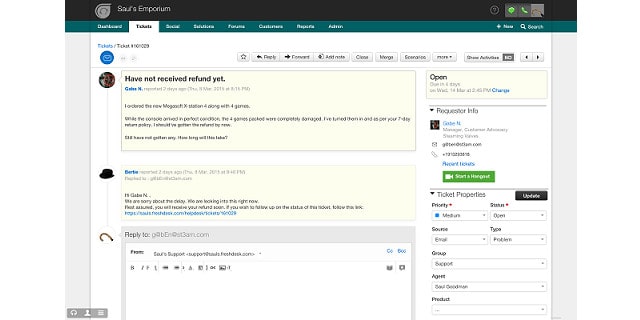



whoah this weblog is excellent i like reading your articles.
Keep up the good work! You recognize, many individuals are hunting round for this info, you can aid them greatly.